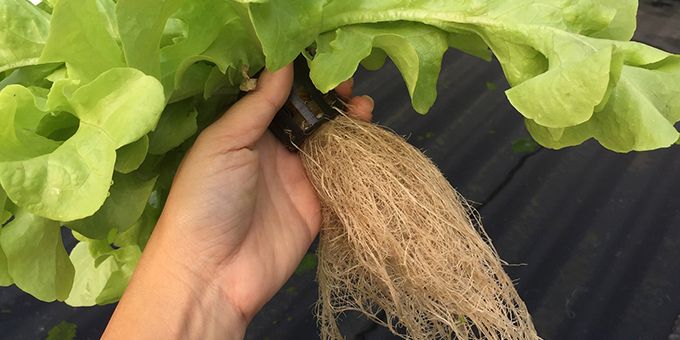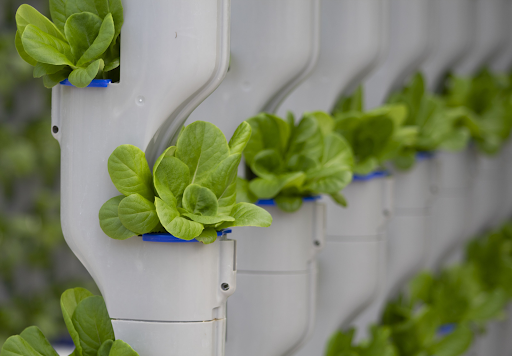If you’re wondering what the differences are between Aeroponics vs. Hydroponics, you’re probably not alone. These often misunderstood agricultural practices are set up to be the future of farming, but most people don’t know much about them.
 Key Differences Between Aeroponics & Hydroponics
Key Differences Between Aeroponics & Hydroponics

Article from | Eden Green Technology
Why Are Aeroponics and Hydroponics Important?
In today’s increasingly fragile world, we have a growing global population, increasing urbanization, and a major problem with climate change, soil degradation, and crop contamination. All of this adds up to not enough food to feed everyone safely. Fortunately, a few agricultural methods can improve this situation with crops grown in nearly any climate, using no soil in the growing process.
Of course, we’re speaking of aeroponics and hydroponics. These methods allow commercial growers to stack plants vertically in towers or trays reaching high into the greenhouse roof. Because they can be grown indoors, these crops can be raised and harvested multiple times each year, without concern over the climate or weather outside. But what are aeroponics and hydroponics, and how do they work? Read on to learn more.
What is Aeroponics?

Aeroponics comes from two root words: “aero,” meaning air, and “ponics,” meaning an ecosystem of artificial construction. Aeroponics, then, refers to growing plants in the air, as opposed to in the soil.
If you’re picturing plants floating on clouds, that’s not quite the way of it. Of course, these plants are secured into a system of some sort, typically a series of trays or tubes, leaving the roots exposed to the air. The plants are then fed and watered by misting these roots with a nutrient-rich misting system, allowing them to grow more rapidly because they don’t have to distill their nutrients from the soil.
What is Hydroponics?
Much like aeroponics, hydroponics comes from the roots, “hydro,” meaning water, and again, “ponics,” meaning an ecosystem of artificial construction. In hydroponic farming, the plants grow in a soilless medium such as coco coir, rock wool, or perlite and are given direct access to nutrients through the flow of enriched water.
Again, hydroponic systems typically involve a series of trays, tubes, or towers that each support many plant pods in an indoor growing environment. The system is then periodically flooded with nutrient-enriched water, allowing the plants to gain direct access to all of the nutrients they require.
Aeroponics vs. Hydroponics
Both of these systems have their pros and cons, and the method you choose will largely depend on your unique growing needs. The truth is that these systems have far more in common than in contrast. They’re both ideal for growing plants such as leafy greens, microgreens, and herbs. And both can be made to be far more sustainable than most soil-based farming.
To start, let’s examine the benefits of growing indoors without soil.
-
No reliance on land or soil conditions.
-
Continuous production regardless of season, weather, or climate.
-
Higher yield and faster growing.
So how should you choose a soil-less system for your greenhouse? Here are a few of the differences between aeroponics vs. hydroponics that you should consider when choosing between the two:
-
Plants tend to establish roots more quickly in a hydroponic environment.
-
Aeroponic plants begin to catch up with hydroponics after their root development is complete.
-
Around six weeks into the growing cycle, aeroponic plants may grow larger than hydroponic, though this may not be ideal depending on the crop.
-
Some aeroponics systems allow you to grow root vegetables, an option not available to hydroponic growers.
-
While hydroponic systems require more water to start, the water is contained within the system and can be recycled again and again.
-
Hydroponic systems tend to be far less difficult to build or operate and offer far more room for error, making them the better option for beginners.
-
Aeroponic systems are far more precise and technical and can be more susceptible to breakdowns and other difficulties.
Make the Choice Easy with Eden Green Technology
Of course, if you’re unfamiliar with these practices or simply want the added benefit of an expert guide every step of the way, there is an easy way to get started with your very own commercial greenhouse. Eden Green Technology, the award-winning creator of several hydroponic technologies, offers a turnkey solution that might be just perfect for you. Here’s how it works:
-
Contact us and speak with our experts about your hydroponic growing needs.
-
We will create a plan and help you build your very own vertical farming greenhouse on as little as an acre and a half.
-
We’ll help you hire a team of about 30 full-time workers per greenhouse and even train and certify them for you, ensuring you have the help you need to grow food responsibly.
-
As you take over the daily operations of your greenhouse, we’ll continue to provide ongoing support and consulting to ensure you have the best possible technology to increase yields and food safety.
-
You can then sell your crops to food distributors, restaurants, retailers, or directly to the public as you see fit.
Sound like a great way to get growing sustainably? RSVP for a virtual tour of our R&D vertical greenhouse and see our hydroponic solutions in action for yourself. Then get started on the road to a more sustainable future with plenty of healthy food for everyone.
The content & opinions in this article are the author’s and do not necessarily represent the views of AgriTechTomorrow
Comments (0)
This post does not have any comments. Be the first to leave a comment below.
Featured Product

